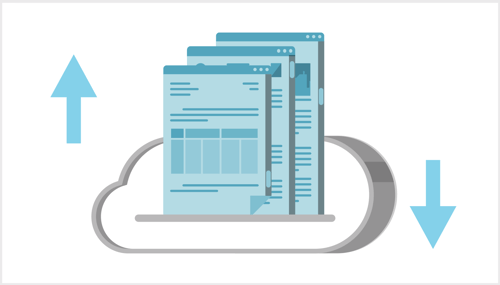According to Deloitte, roughly 80 percent of Human Resource executives rate Employee Experience (EX) as important or very important. Given that statistic, it is safe to say that organizations today need a robust EX strategy to attract and retain talent. Moreover, companies that invest in EX had more than four times the average profit and more than twice the average revenue.
However, the same Deloitte study shows that only 22 percent of HR executives report that their companies provide a differentiated employee experience.
Employee experience is a primary responsibility of Human Resources and begins as soon as a candidate accepts an offer and starts the onboarding process. Human Resources teams realize the importance of enabling a seamless onboarding experience and work hard for it, but it is difficult to execute if you are reliant on manual processes.
Some key onboarding challenges can include:
- Complicated and varied spreadsheet driven workflows
- Significant amounts of paperwork
- Dependency on other departments for onboarding.
- Email driven communication and manual task management among people responsible for onboarding.
- Manual data entry into multiple HR applications
If you are a HR representative, you are probably well aware of how these tedious processes can slow your onboarding process down and cause confusion for new hires. Employees who spend their first day or even the first few weeks navigating complex applications to gather the tools they need to do their job tend to quickly lose their enthusiasm for their new role.
Most organizations desire a structured process for onboarding with well-defined workflows, automated tasks, and a decrease in operational costs.
When organizations can drive efficient and effective processes, they impact EX positively and increase employee retention. The math is simple: higher retention = higher productivity and lower recruitment costs. In a Korn Ferry FutureStep survey, 98 percent of respondents said onboarding programs are a key factor in retention efforts. Employees who don’t feel embraced by the organization tend to resign within six months.
How ServiceNow drives EX through efficient onboarding:
Here’s an interesting statistic: 67 percent of high performing companies have a structured new hire onboarding process according to a study featured in Inc. Magazine.
ServiceNow not only provides a structured workflow but also automates routine tasks and digitizes paperwork. From completing tasks to communication to documentation to coordination, everything can be done using the single window interface of the ServiceNow Platform.
And, this is not limited to just onboarding. With ServiceNow, you can orchestrate entire employee lifecycle events on a single platform. Here are some exciting ways ServiceNow can be leveraged to enhance EX.
Enable Self-Service for new-hires
Scenario #1
New hires in any organization will have several questions around payroll, benefits, paid time off, company policies etc. They typically seek clarity from their supervisors, approach HR through multiple channels and wait for several hours for a response. This could distract the employee from productive work.
How ServiceNow can help
With ServiceNow self-service portal, employees can access FAQs and key HR information in a search driven fashion. If they can’t find the answer they are looking for, the platform allows them to log a request, auto routes the request to the appropriate HR department. The portal can be accessed via mobile or desktop devices 24/7.
Scenario #2
New hires need to complete tasks like enrolling for benefits, signing NDAs, acknowledging information security and intellectual property policies, etc. Completing and managing paperwork is tedious for both employees and HR teams. It can be confusing for new employees to coordinate with different departments to get these routine tasks done.
How ServiceNow can help
Employers can create a definitive and intuitive tasks for new employees in the portal. The e-signature capability of ServiceNow enables them to sign NDAs and other important documents virtually. The platform also automates and streamlines tasks like assigning workspaces, security IDs etc.
Drive HR efficiency
Scenario #3
HR representatives are flooded with employee requests from multiple channels, and most tend to be repetitive in nature.
How ServiceNow can help
The portal allows employees to access the HR knowledge base, and auto routes and tracks their requests. This drastically improves the HR team’s efficiency, allowing them to focus on talent management, creating a better organizational culture, etc.
Scenario #4
Hiring managers need to ensure the new hire is provided with all the necessary resources.
How ServiceNow can help
With ServiceNow, the hiring manager can submit a set of menu driven requests for the new hire. These can include requesting a computer with the appropriate and relevant software, assigning workspace, requesting parking spots and more.
The hiring manager can complete these tasks and make service requests to other departments (IT, etc.) within the same portal and track the status as appropriate.
In addition to the benefits noted above, ServiceNow enables HR teams to:
- Have a clear visibility of the entire onboarding process to ensure there are no dependencies or action required from other departments.
- Track real time activities and data by department and location and make sure there are no delays.
ServiceNow provides a consumer like experience to your employees. At the same time, since the entire process is can be orchestrated and managed in a single platform, your HR teams will become more productive as well.
If you are in an industry where there is a dire need for talent, creating an outstanding employee experience starting with onboarding is imperative. Most organizations today are still heavily reliant on paperwork and manual processes which can significantly increase the cost per hire.
